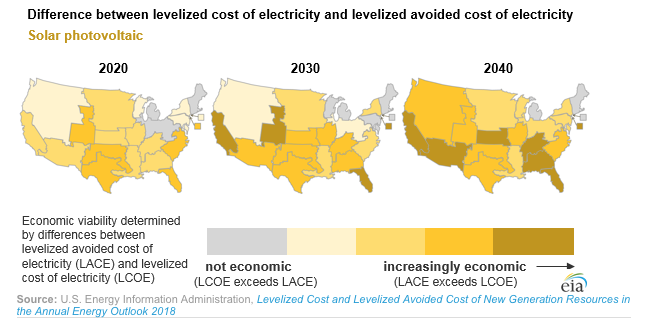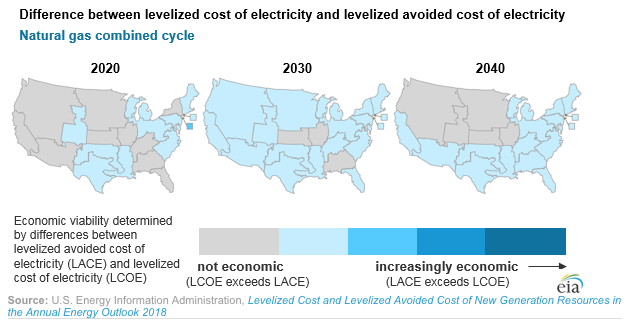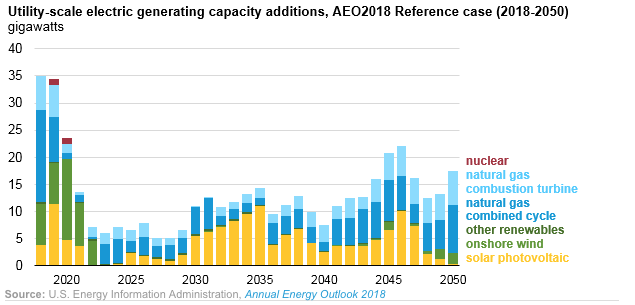The U.S. Energy Information Agency’s American Energy Outlook 2018 gives the agency’s view of what the U.S. energy system will look like between now and 2050. From a climate perspective, the outlook isn’t great, with U.S. greenhouse gas emissions predicted to be about the same in 2050 as they are today, with some shifting to emissions from natural gas instead of coal and other fuels.
This picture is an apparent critique of two ideas that are often held in the climate and energy world: that the expansion of natural gas and the march of low-cost renewables will continue to cut emissions into the future.
What is interesting to me, and what I offer as a question, is why does the future of natural gas looks so good to the EIA? In a blog post, the EIA explains how it measures the cost-competitiveness of different energy resources over the next few decades. The metrics work when you compare the levelized cost of electricity (LCOE) to the levelized avoided cost of electricity (LACE), where the former is the cost of adding new capacity to the grid and the latter is the value of adding new capacity to the grid. So, when LACE is higher than LOCE for a particular source, it is worth it to build capacity of it.
This chart shows the EIA’s comparison of the two for solar energy being built in the next few decades. I read it showing new solar installs getting increasingly competitive (especially in the South). A bright future, it seems. The next chart shows the same metrics for combined cycle natural gas, which hardly looks so bright, as combined cycle natural gas is increasingly uncompetitive (especially in the upper midwest?).
The kicker here is that EIA still predicts massive build outs of natural gas, which accelerate into the 2040s. Here is their chart of generating capacity additions for the next few decades. As solar is getting more economical, it is being installed in lower numbers, while the opposite is true of gas.
Someone who knows more than me can probably explain what I’m missing.


